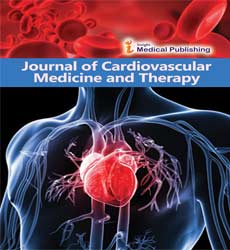Small G Proteins therapeutic in Cardiovascular Medicine
Jones Zoey*
Department of Sociology and Anthropology, Carleton University, Colombia
- *Corresponding Author:
- Jones Zoey
Department of Sociology and Anthropology,
Carleton University,
Colombia,
Tel: 8723014210;
E-mail: joneszoey14@gmail.com
Received: February 18, 2022, Manuscript No. IPCMT-22-11505; Editor assigned: February 21, 2022, PreQC No. IPCMT-22-11505 (PQ); Reviewed: March 07, 2022, QC No. IPCMT-22-11505; Revised: March 11, 2022, Manuscript No. IPCMT-22-11505 (R); Published: March 18, 2022, DOI: 10.36648/ipcmt.22.5.1.001
Citation: Zoey J (2022) Small G Proteins Therapeutic in Cardiovascular Medicine. J Cardiovasc Med Ther Vol:5 No:1
Editorial
Personalized medicine refers to a patient-centered strategy that provides more effective treatment, lowers risks, and avoids unneeded treatments or diagnostic procedures. The examination of innovative therapy approaches in large, controlled trials that give evidence-based guidance has significantly improved the treatment of patients with Cardiovascular Illnesses (CVDs). While this approach has reduced morbidity and mortality in acute coronary artery disease and significantly extended life expectancy in chronic ischaemic heart disease and heart failure, the burden of CVD continues to be high and growing. Atrial fibrillation, acute heart failure, and sudden cardiac death continue to produce unacceptably high rates of morbidity and mortality in the general population. In addition, people who survive acute cardiac events frequently require long-term therapy for persistent illnesses. The development and implementation of a more tailored management system has the potential to improve outcomes dramatically. Endothelial function, smooth muscle cell contraction, proliferation, and migration, as well as cardiomyocyte hypertrophy, are all regulated by small G proteins. Targeting small G proteins and their downstream signalling in cardiovascular illnesses like atherosclerosis, restenosis, hypertension, vasospasm, and cardiac hypertrophy could be viable therapeutic methods.
The therapeutic potential of stem cell treatment for tissue repair and regeneration is enormous. The potential of stem cells to differentiate into a variety of cell types, as well as the ease with which they may be expanded in culture, has sparked a lot of interest in their use as therapeutic agents for a variety of disorders. Various embryonic and adult stem cells, derived from a variety of tissues such as the brain, heart, kidney, and bone marrow, have been evaluated for their therapeutic potential; adult stem cells from the bone marrow have been extensively researched in clinical trials. Indeed, Mesenchymal Stem Cells (MSCs) produced from bone marrow have been used to treat a wide range of disorders, including Myocardial Infarction (MI), Parkinson's disease, Crohn's disease, and cancer, to name a few. Currently, more than 100 clinical trials with MSCs are underway in the United States alone (according to ClinicalTrials.org), with promising preliminary results.The accumulation of abdominal fat has been proven to play a key role in the development of metabolic syndrome. The build-up of visceral fat, in particular, is linked to the development of cardiovascular disease and obesityrelated illnesses such diabetes, hyperlipidemia, and hypertension. Adipocytes' roles have been extensively explored in the last ten years as a result of these clinical results, and they have been discovered to act as endocrine cells that produce several bioactive compounds known as adipocytokines.
Artificial Intelligence (AI) is a broad term that encompasses analytical algorithms that iteratively learn from data, allowing computers to discover hidden insights without being explicitly instructed where to seek. These are a group of operations that include terminology like machine learning, cognitive learning, deep learning, and reinforcement learning-based methods for integrating and interpreting complicated biological and healthcare data in situations where traditional statistical methods fail.
Open Access Journals
- Aquaculture & Veterinary Science
- Chemistry & Chemical Sciences
- Clinical Sciences
- Engineering
- General Science
- Genetics & Molecular Biology
- Health Care & Nursing
- Immunology & Microbiology
- Materials Science
- Mathematics & Physics
- Medical Sciences
- Neurology & Psychiatry
- Oncology & Cancer Science
- Pharmaceutical Sciences
